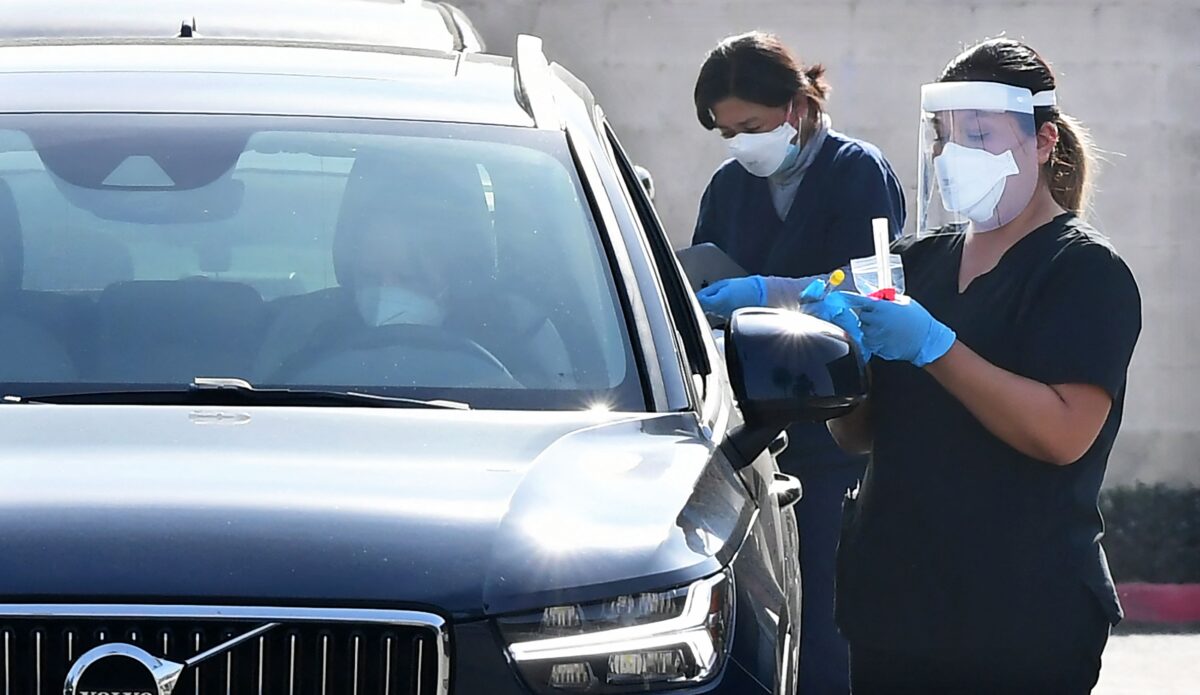By Zachary Stieber
COVID-19 case counts have dropped across the United States in recent days, stoking optimism that the Omicron-fueled wave is subsiding.
Thirty-four states have recorded a decrease in cases in recent days, not including states that reported a single-day drop, according to an Epoch Times analysis.
That includes some of the states that saw huge Omicron-fueled increases, including New York, California, and Florida.
Omicron is one of the newest variants of the CCP (Chinese Communist Party) virus, which causes COVID-19.
Other states that have seen fewer cases recently include Alabama, Delaware, Georgia, Louisiana, Nevada, North Dakota, Oregon, and Pennsylvania.
States in every region of the country have reported fewer cases, and a smaller number have also seen a lower number of people being admitted to hospitals with or for COVID-19.
Omicron is more transmissible than the Delta variant, which dominated the United States for months last year. However, it causes a smaller percentage of cases that require hospital care or lead to death.
States saw a significant increase in positive tests with the emergence of Omicron late last year, in part because the COVID-19 vaccines provide little protection against infection from the strain.
Cases in New York shot above 90,000 on Jan. 7, but have since dropped sharply, hitting 26,772 on Monday.
Hospitalizations attributed to COVID-19 have also gone down in the northeastern state in recent days.
Gov. Kathy Hochul, a Democrat, worries that hospital admissions may go back up in the near future, “but overall, the prognosis, the forecast, for COVID is much brighter than it had been before.”
“The COVID clouds are parting,” she told reporters in Latham last week.

In Alabama, cases have dropped from over 14,000 on Jan. 10 to under 10,000 for several days.
New Jersey recorded over 33,400 cases on Jan. 7. Ten days later, the state notched under 8,300.
Oregon’s daily count dropped from nearly 9,000 on Jan. 3 to under 1,800 about a week later.
In the other states, including Alaska and Iowa, cases have risen, have only dropped slightly, or have only recorded a one-day drop.
Overall, the number of new cases nationwide dropped from 1.3 million on Jan. 10 to the mid-800,000s in the following days, according to data reported by states to the Centers for Disease Control and Prevention.
U.S. health officials have said the drop in cases could come quickly, similar to the plunges seen in South Africa and other countries that dealt with earlier Omicron waves.
Omicron is the new dominant strain in the country, displacing the Delta variant last month, according to genomic sequencing of a sample of cases.
Even though the new variant leads to a lower percentage of hospitalizations, experts have expressed concern that the surge in cases could lead to overburdening hospitals, which are already struggling with staffing shortages and fewer beds than several years ago.
Additionally, vaccines that had been shown effective against infection and severe disease from earlier variants stopped working as well against Delta and are even less effective against Omicron, particularly against infection, studies show.
Even a second booster of Pfizer’s shot isn’t enough to protect against Omicron infection, Israeli scientists said this week, following early data that indicated an initial booster of Moderna’s shot only lasted several weeks before slipping.
Primary vaccine regimens have held up somewhat against severe disease, and in many areas, more hospitalized patients are unvaccinated than vaccinated, prompting officials to urge people to get vaccinated and boosted.
Drawing from hospitalization data, California officials said that between Dec. 20 and Dec. 26, 2021, unvaccinated people were 8 times more likely to be hospitalized with COVID-19 than fully vaccinated people.
Read More From The PatriotAmerican
On the other hand, the number of vaccinated patients continues to rise in a number of locales.
In Massachusetts, for instance, where cases have eased but hospitalizations have not, 48 percent of the 3,223 COVID-19 patients in hospitals on Jan. 13 were fully vaccinated when they contracted the disease, according to the state Department of Public Health.

